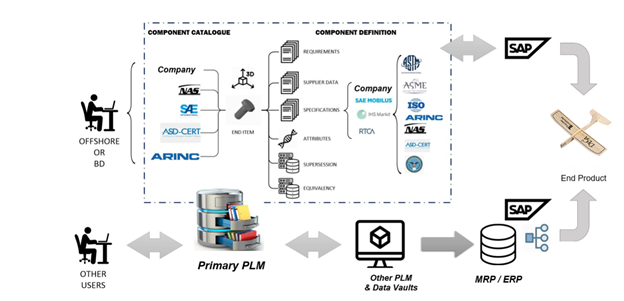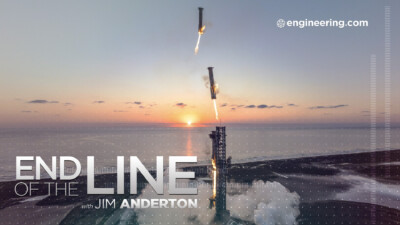Accuris connects internal systems for a "customer digital enablement."

We’ve all been swept up in the AI wave. We have tried all manner of large language models (LLMs, including the media favorite, ChatGPT) and found them all lacking in one way or another. One —Claude — claimed to be good at math but wasn’t. Most seem to be good at answering college-level English literature questions, but incapable of solving freshman physics problems. We have used them for help when researching articles (especially Perplexity). When we gave ChatGPT several engineering-type questions, it always had an answer — but not always correct ones.
Perhaps we should not expect LLMs to be know-it-alls. How could they be? They’re trained on data troves of information scraped from all who would supply it as well as publicly available information such as Wikipedia. While the collective size of the data at their disposal is staggering, the quality, accuracy and depth of their answers is all too often lacking. Plus, the data that may be most valuable to engineers — their own — is off limits to LLMs.
Any organization of a good size and long history will have a tremendous amount of information. Therin is a valuable history with documents, drawings, models, revisions, PLM databases … all those which compromise tribal knowledge.

If this was a class on the failures of LLMs for engineers and the need for AIs to train on their own data, Jeff Platon, head of marketing at Accuris, would be in the front row and emphatically raising his hand.
“We totally got this,” he would say.
Accuris has a product called Goldfire, a semantic search application made to search an organization’s data.
Semantic search is the type of search that can sense context and the user’s meaning, as opposed to keyword search, which looks for exact word matches. By way of example, semantic search will find a different “best football player” in the U.S. than the UK, recognizing the correct sport in each location.
In the U.S., who bigger or with more history than the Navy? Who more to benefit from sematic search through vast repositories of data? Who is less likely to put their data on the cloud for training of civilian LLMs for their training? Instead, the military carefully guards its information from prying eyes, keeping it encrypted on secure servers.
Platon opens with a slide of an aircraft carrier. He comes from a Navy family. With the single biggest weapon system on display, a marvel of technology and an exemplar of operations in the most devastating environment possible — war — he has the attention.
Mining a company’s own data is what Goldfire is all about. Accuris does this by combing through all of it, indexing, linking … in short organizing and hyperlinking in a way to make information findable and usable.
The aircraft carrier was not just for show. The U.S. Navy is an Accuris customer and uses Accuris to help make design decisions.
NASA is another customer. Platon tells a story of helping NASA find information to avoid astronauts returning to Earth, splashing down in the ocean, but their capsule unable to right itself leading to a potentially “very bad outcome.” NASA scoured their information troves for information on inflatable bags used to successfully right reentry capsules for the Apollo mission. They found nothing. They called retired engineers to see if they had kept any information. The search went on for a year until finally they called in Accuris.
“Within 20 minutes of implementing the AI infrastructure, they found 249 documents that solved their problem, say Platon. They were able to fix the engineering problem. NASA saved $2 to $3M dollars and one to two more years of sorting through the data and organizing it.”
“We helped NASA find a solution to astronaut recovery,” says Platon.

Accuris works with text documents and databases. It aims for a wholistic approach to all of an organization’s needs. By analyzing everything, it’s able to connect data islands of CAD and PLM to PLM, ERP, SQL databases as well as manufacturing and upstream operations such as procurement systems. Along with other solutions such as automated BOM reporting from a database of 1.2B parts and Supply Chain Intelligence, the ESDU knowledge base containing engineering design data, Engineering Workbench, an AI platform for standards, codes, and regulations management.
Putting it all together, Accuris should theoretically enable an organization to answer operational questions that span departments and disciplines. For example, if a part fails on a production line, how long it would take for the supply chain to replace it?
This is vital for China Plus One strategies, says Platon.
Accuris’ AI technology is already available for this purpose and in use by 900,000 design engineers, including many large companies, branches of the armed forces and defense contractors.
It may be Accuris’ worst kept secret.
“We don’t make a big deal of it,” says Platon modestly.
Lest we think Accuris is only military, Platon steers us towards green hydrogen, an energy source of such potential that people have stated that it will save the Earth, a technology in which Accuris is engaging.
Accuris may be better known as IHS (its previous owner) and as a publisher of millions of standards of which ANSI, SAE and AS are the best known. The company also has access to seven million technical articles and books and 108 million patents and patent applications.
That, all by itself, would be something for a neural network to feast on.



